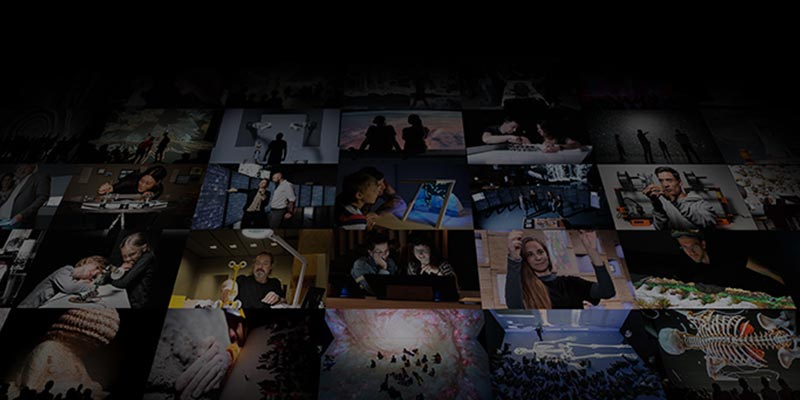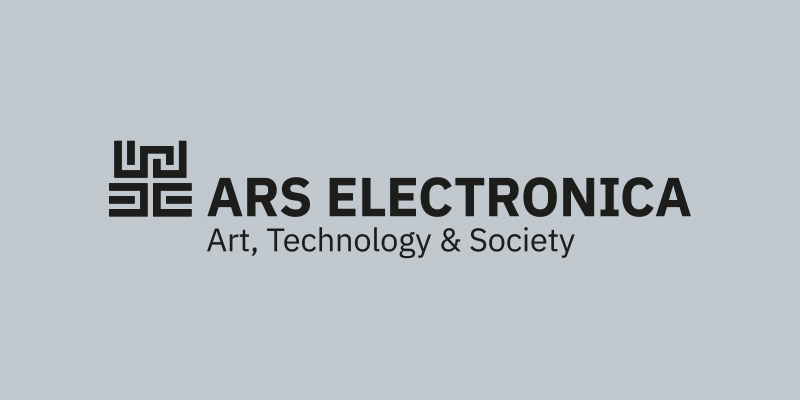Mediathek

Family Tour
In this Family Tour we introduce you to C.Elegans, whose brain is more easily entangled than the human. And imagine, their brain can even be transferred to a robot!

Deep Space LIVE: Geophysics, Drones, Laserscan ... with Hightech on the track of the Romans
Whether using georadar to take "x-ray pictures" of the ground, recognising features of the terrain using drones or documentation using 3D laser scans - all of these methods are currently being used in the area of the Danube Limes in Upper Austria, among others. On this evening, Roman expert Dr. Stefan Traxler (OÖ Landes-Kultur GmbH) will give you an overview of current projects.

Tour: Bio Art & Science III
The photo studio eye of science is dedicated to visualizing the hitherto unknown and unseen. In this tour we show you that not only art but also science has its images.

Family Tour (SBH)
In this serbian Family Tour we'll look for the tardigrade under the microscope and learn interesting facts about this little creature.

Tour: Bio Art & Science III
The photo studio eye of science is dedicated to visualizing the hitherto unknown and unseen. In this tour we show you that not only art but also science has its images.

Prix Ars Electronica 2020 / Interactive Art +: Lauren Lee McCarthy
Lauren Lee McCarthy receives the Golden Nica of the 2020 Prix Ars Electronica for her project "SOMEONE". We present this winning project from the Interactive Art + category and have a live conversation with the artist who lives and works in Los Angeles.

Tour: New Materials IV
In addition to the aspect of sustainability, new materials should also be as flexible and changeable as possible. New production technologies, such as so-called additive manufacturing, make this possible! Come with us to our MaterialLab. In this fifth issue, our infotrainers give you an insight into the materials research of the future.

Deep Space LIVE: Inside Bruegel
2019 marks the 450th anniversary of the death of Pieter Bruegel the Elder, the outstanding painter of the Dutch Renaissance. On the occasion of this anniversary, art historian Dr. Lothar Schultes (Oberösterreichisches Landesmuseum) will show you impressive gigapixel pictures of his most famous works paired with expert explanations.

Tour: New Materials III
In Ars Electronicas' MaterialLab, we're not only interested in what new materials are currently being researched, but also in how they can be produced. This doesn't always necessarily require computers - there are also so-called programmable textiles. We'll show you what these are and how something like that can work.

Tour: New Materials II English
How could the production of tomorrow look like? During this tour of the Ars Electronica MaterialLab, you'll learn about the new everyday materials currently being researched that can be manufactured without environmentally harmful production processes, using biological processes.

Tour: New Materials I English
How could the production of tomorrow look like? During this tour of the Ars Electronica MaterialLab, you'll learn about the new everyday materials currently being researched that can be manufactured without environmentally harmful production processes, using biological processes.

Ars Electronica Mix: Inside Futurelab – Bio Plastic Art (EN)
Explore the Ars Electronica Center Biolab and the beautiful world of bioart with Yoko Shimizu, Futurelab researcher and artist.

Deep Space Highlights (EN)
Experience the best that Deep Space has to offer! Together we will visit historical sites, fly into space and explore the inside of the human body.

Tour: Bio Art & Science II
Humans are a highly complex organism with more than 87 billion individual cells, which makes it very difficult to completely record and examine them. The organoids of the human brain developed by Madeline Lancaster and Jürgen Knoblich at the Institute of Molecular Biotechnology of the Austrian Academy of Sciences - organ-like, artificially produced microstructures a few millimetres in size - represent a real paradigm shift.

Inside Futurelab: Immersify (The translucent St. Stephen’s Cathedral)
With more than 20 billion laser points the cathedral church of St. Stephen in Vienna was measured. In this unique level of detail they correspond to a data volume of almost 400 gigabytes and form the basis of the translucent St. Stephen's Cathedral.

Inside Futurelab: Immersify (The Great Pyramid in 3D)
The Great Pyramid in 3D, From the BBC Series Ancient Invisible Cities explores the possibilities of virtual archaeology by scanning and digitally displaying historical architecture - in this case the Pyramid of Cheops in Giza.

Tour: Bio Art & Science II
Humans are a highly complex organism with more than 87 billion individual cells, which makes it very difficult to completely record and examine them. The organoids of the human brain developed by Madeline Lancaster and Jürgen Knoblich at the Institute of Molecular Biotechnology of the Austrian Academy of Sciences - organ-like, artificially produced microstructures a few millimetres in size - represent a real paradigm shift.

Science Talk: zusammen_ziehen with Manuel Selg
In this Science Talk, Manuel Selg (molecular biologist and head of the Department of Chemistry and Biology at the Upper Austrian University of Applied Sciences, Campus Wels) will provide insights into the CRISPR-Cas9 gene scissors, with which the genetic material of any living being can be altered at any desired location - and is freely available on the Internet.

Family Tour
Have you ever looked through a microscope? With a microscope you can look at the smallest things in a big way. On this Family Tour, we'll go to the Ars Electronica Center's BioLab and look at the microcosm of cells.

Deep Space: Biology meets Media Art
Anyone who has ever looked at an organism under a microscope knows how beautiful such a thing can look. Inspired by this, many media artists take up the topic of biology in their work.



